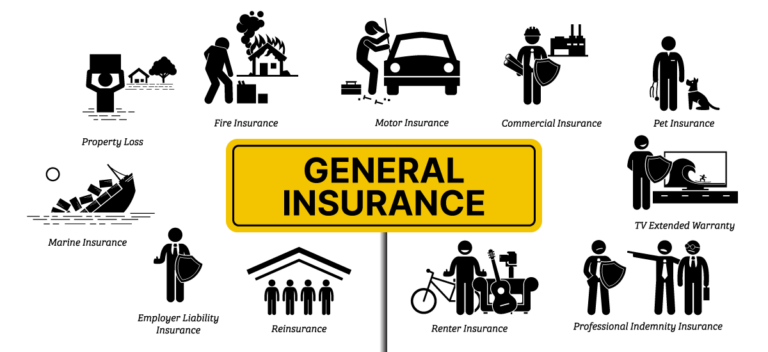Non-life insurance, often referred to as property and casualty (P&C) insurance, stands as a shield against the financial repercussions of unexpected events, ranging from property damage to legal liabilities. Unlike life insurance, which centers on the life and well-being of an individual, non-life insurance is a broader concept, safeguarding individuals, businesses, and organizations from a myriad of risks.
Coverage that Matters
- Property Insurance: At the heart of non-life insurance lies property coverage. This includes protection against the loss or damage to physical assets such as homes, buildings, and personal belongings. Whether it’s a natural disaster, fire, or theft, property insurance acts as a financial buffer, ensuring that the insured can rebuild and recover.
- Liability Insurance: In a litigious society, liability insurance plays a pivotal role. It shields individuals and businesses from the financial fallout of legal claims and lawsuits. From bodily injury to property damage, liability insurance steps in to cover legal expenses and potential settlement costs.
- Vehicle Insurance: On the road of life, unexpected bumps and collisions are inevitable. Vehicle insurance provides a safety net, covering the costs associated with damages, theft, or accidents involving automobiles. This not only safeguards the vehicle owner but also protects others on the road.
- Business Insurance: Businesses, both small and large, face a myriad of risks. Non-life insurance for businesses encompasses a spectrum of policies, including commercial property insurance, general liability insurance, and business interruption insurance. These policies ensure that businesses can weather the storm of unforeseen events, maintaining financial stability and continuity.
Risk Management Services
Non-life insurance isn’t just about financial compensation; it’s a crucial component of risk management. By transferring the financial burden of unexpected events to insurance companies, individuals and businesses can mitigate the impact of losses without shouldering the full financial responsibility themselves.
Key Features/Benefits of Non-Life Insurance
- Financial Protection against Losses
- Risk Mitigation for Businesses
- Legal Liability Coverage
- Peace of Mind for Homeowners
- Vehicle Protection
- Business Continuity
- Promotes Economic Stability
- Risk Transfer and Diversification
- Compliance with Regulations
- Supports Community Resilience
Navigating Premiums and Deductibles
The cost of this financial protection comes in the form of premiums, payments made by policyholders to insurance companies. Premiums are determined based on various factors, including the level of coverage, the type of property or liability being insured, and the policyholder’s risk profile. Deductibles, the out-of-pocket amount the policyholder must pay before insurance coverage kicks in, add another layer to the financial dynamics of non-life insurance.
Related: What Is SIP (Systematic Investment Plan) And How Does It Works? – SIP Simplified
The Art of Underwriting
Underwriting is the art and science of risk assessment. Insurance companies employ underwriting processes to evaluate the risk associated with providing coverage. Factors such as the insured’s history, the value of the insured property, and the likelihood of potential risks are carefully scrutinized to ensure a balanced and sustainable insurance portfolio.
Regulation and Reinsurance
Governments regulate the non-life insurance industry to ensure fair practices and protect policyholders’ interests. Regulatory bodies oversee insurance companies, monitoring their financial stability and adherence to industry standards. Additionally, the concept of reinsurance comes into play, where insurance companies share the risk among themselves. Reinsurance helps spread the risk and limit exposure, fostering a more resilient insurance ecosystem.
In Conclusion
Non-life insurance is not just a financial transaction; it’s a commitment to resilience in the face of life’s uncertainties. As individuals, businesses, and communities navigate the complex landscape of risks and perils, non-life insurance stands as a reliable partner, providing the financial support needed to rebuild, recover, and thrive. In this intricate dance between risk and protection, non-life insurance takes center stage, ensuring that the canvas of life remains vibrant and secure.




